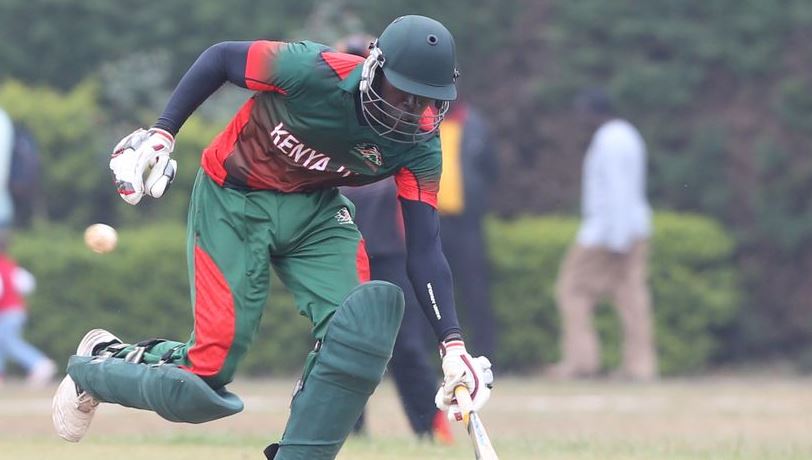 Cricket in Kenya has a rich history, marked by significant achievements and challenges. Although the sport is not as widely popular as football or athletics, cricket has carved out a niche for itself in the country, producing notable players and memorable performances on the international stage.
Cricket in Kenya has a rich history, marked by significant achievements and challenges. Although the sport is not as widely popular as football or athletics, cricket has carved out a niche for itself in the country, producing notable players and memorable performances on the international stage.
This article explores the history, development, and current state of cricket in Kenya, highlighting key milestones and the potential for future growth.
Historical Background
Cricket was introduced to Kenya in the late 19th and early 20th centuries by British colonialists.
The sport quickly gained popularity among the expatriate community and later spread to the local population, particularly within the Asian community, which played a crucial role in its development.
Early Years:
- Colonial Era: During the British colonial period, cricket was primarily played by expatriates and the Asian community. The sport was organized through clubs and leagues, with matches often played in Nairobi and Mombasa.
- Post-Independence: After Kenya gained independence in 1963, cricket continued to be popular among the Asian community. The establishment of the Kenya Cricket Association (KCA) in 1981 helped formalize the sport’s administration and provided a structure for domestic competitions.
Rise to Prominence
Kenya’s cricketing journey gained international recognition in the 1990s, with the country’s participation in the ICC Trophy and the Cricket World Cup.
The 1996 ICC Cricket World Cup was a watershed moment for Kenyan cricket, as the national team made a significant impact.
1996 Cricket World Cup:
- Famous Victory: Kenya’s victory over the West Indies in the 1996 World Cup remains one of the most significant upsets in cricket history. According to https://4rabetsite.com/, the team bowled out the West Indies for just 93 runs, securing a memorable win that put Kenyan cricket on the global map.
- Group Stage Exit: Despite the victory, Kenya did not progress beyond the group stage, but the performance boosted the sport’s profile in the country.
2003 Cricket World Cup:
- Semifinal Appearance: The 2003 World Cup was Kenya’s most successful tournament to date. The team, led by Steve Tikolo, reached the semifinals, defeating established teams like Sri Lanka and Zimbabwe. This achievement made Kenya the first non-Test-playing nation to reach the semifinals of a World Cup.
- Key Players: Players like Maurice Odumbe, Thomas Odoyo, and Collins Obuya played pivotal roles in Kenya’s successful campaign. Their performances inspired a new generation of cricketers in the country.
Challenges and Decline
Despite the successes, Kenyan cricket faced numerous challenges, including administrative issues, lack of infrastructure, and dwindling support.
These factors contributed to a decline in the sport’s fortunes in the late 2000s and 2010s.
Administrative Issues:
- Governance Problems: The Kenya Cricket Association faced issues with governance, including allegations of mismanagement and financial irregularities. These problems hindered the development of the sport and led to a decline in international competitiveness.
- Loss of ODI Status: In 2014, Kenya lost its One Day International (ODI) status, further diminishing its standing in the international cricket community.
Infrastructure and Funding:
- Lack of Facilities: Kenya’s cricket infrastructure has struggled with inadequate facilities, including the availability of quality pitches and training grounds. This has limited the development of players at the grassroots level.
- Funding Issues: The sport has also faced challenges in securing sufficient funding and sponsorship, which has impacted the ability to organize domestic competitions and support the national team.
Recent Developments and Future Prospects
Despite the challenges, there have been efforts to revive cricket in Kenya and rebuild the sport’s infrastructure. These efforts focus on grassroots development, improving governance, and increasing participation.
Grassroots Development:
- Youth Programs: Several initiatives have been launched to promote cricket among the youth in Kenya. These programs aim to introduce the sport in schools and communities, nurturing young talent from an early age.
- Cricket Academies: The establishment of cricket academies has provided structured training for young players, helping them develop their skills and gain exposure to competitive cricket.
Domestic Competitions:
- Revival of Leagues: Efforts are underway to revive domestic leagues and tournaments, providing a platform for players to showcase their talents and gain match experience.
- Club Cricket: Club cricket remains an essential part of the cricketing structure in Kenya, offering regular competition for players and a pathway to the national team.
International Ambitions:
- Regaining ODI Status: Kenya aims to regain its ODI status by performing well in ICC tournaments and qualifiers. The national team’s participation in events like the ICC World Cricket League provides opportunities to compete at a higher level and improve rankings.
- Talent Development: The focus on developing a strong pool of players and improving coaching standards is critical for Kenya’s ambitions on the international stage.
Cricket in Kenya has a storied history filled with remarkable achievements and significant challenges. The successes of the 1996 and 2003 World Cups are fondly remembered, but the sport has faced a decline in recent years due to various issues.
However, efforts to revive cricket in the country are ongoing, with a renewed focus on grassroots development, improving infrastructure, and fostering young talent.
The future of Kenyan cricket depends on the successful implementation of these initiatives and the support of the cricketing community.
As Kenya works towards regaining its place in the international cricket arena, the passion and dedication of its players and supporters remain as strong as ever.








